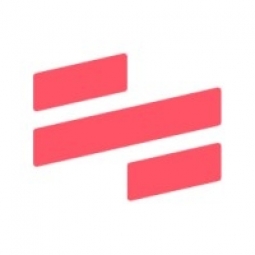技术
- 应用基础设施与中间件 - 中间件、SDK 和库
- 网络安全和隐私 - 安全合规
适用行业
- 水泥
- 医疗保健和医院
适用功能
- 质量保证
用例
- 楼宇自动化与控制
- 时间敏感网络
服务
- 系统集成
关于客户
Coronis Health 是一家收入周期管理公司,为全国各种规模的医疗机构提供服务。该公司利用 50 多个应用程序来支持 1,500 多个客户。运营团队负责完成两者的高度具体任务。该公司的 11 人分析团队记录了这些流程,供 Coronis 客户群的 10,000 多名员工遵循。 Coronis Health 与医疗保健客户合作,并定期处理大量个人身份信息 (PII),因此患者数据永远不会出现在其流程文档中至关重要。
挑战
Coronis Health 是一家收入周期管理公司,在管理和记录其流程方面面临着重大挑战。运营团队拥有 50 多个应用程序来支持 1,500 多个客户,负责完成高度具体的任务。这些过程需要手动记录在 Word 或 PDF 中,既费力又耗时。缺乏单一事实来源导致 Coronis 及其客户的工作方式存在差异,从而造成挫败感和低效率。该公司需要一个简单、可扩展且合规的流程文档解决方案。
解决方案
Coronis Health 采用 Scribe 作为流程文档的新标准。公司最重要的流程被制定为构建新 Scribe 内容的基线。借助 Scribe,记录所有操作流程的任务变得可行。该公司还开创了一个先例,即任何可复制的任务都应记录在抄写员中,从而标准化流程文档的格式并节省时间。分析团队使用 Scribe 来回答支持请求,从而缩短了完成时间。他们为常见请求创建了一个大型抄写员库,减少了重复请求的数量。 Scribe 还使 Coronis 员工能够回答自己的问题,从而提高效率。该公司还使用 Scribe 将任务转移给离岸团队,克服了由于不同时区和缺乏适当解释而造成的瓶颈。为了确保患者数据永远不会出现在流程文档中,Coronis 为其抄写员建立了内部审批流程。
运营影响
数量效益

Case Study missing?
Start adding your own!
Register with your work email and create a new case study profile for your business.
相关案例.

Case Study
System 800xA at Indian Cement Plants
Chettinad Cement recognized that further efficiencies could be achieved in its cement manufacturing process. It looked to investing in comprehensive operational and control technologies to manage and derive productivity and energy efficiency gains from the assets on Line 2, their second plant in India.

Case Study
Hospital Inventory Management
The hospital supply chain team is responsible for ensuring that the right medical supplies are readily available to clinicians when and where needed, and to do so in the most efficient manner possible. However, many of the systems and processes in use at the cancer center for supply chain management were not best suited to support these goals. Barcoding technology, a commonly used method for inventory management of medical supplies, is labor intensive, time consuming, does not provide real-time visibility into inventory levels and can be prone to error. Consequently, the lack of accurate and real-time visibility into inventory levels across multiple supply rooms in multiple hospital facilities creates additional inefficiency in the system causing over-ordering, hoarding, and wasted supplies. Other sources of waste and cost were also identified as candidates for improvement. Existing systems and processes did not provide adequate security for high-cost inventory within the hospital, which was another driver of cost. A lack of visibility into expiration dates for supplies resulted in supplies being wasted due to past expiry dates. Storage of supplies was also a key consideration given the location of the cancer center’s facilities in a dense urban setting, where space is always at a premium. In order to address the challenges outlined above, the hospital sought a solution that would provide real-time inventory information with high levels of accuracy, reduce the level of manual effort required and enable data driven decision making to ensure that the right supplies were readily available to clinicians in the right location at the right time.

Case Study
Gas Pipeline Monitoring System for Hospitals
This system integrator focuses on providing centralized gas pipeline monitoring systems for hospitals. The service they provide makes it possible for hospitals to reduce both maintenance and labor costs. Since hospitals may not have an existing network suitable for this type of system, GPRS communication provides an easy and ready-to-use solution for remote, distributed monitoring systems System Requirements - GPRS communication - Seamless connection with SCADA software - Simple, front-end control capability - Expandable I/O channels - Combine AI, DI, and DO channels

Case Study
Driving Digital Transformations for Vitro Diagnostic Medical Devices
Diagnostic devices play a vital role in helping to improve healthcare delivery. In fact, an estimated 60 percent of the world’s medical decisions are made with support from in vitrodiagnostics (IVD) solutions, such as those provided by Roche Diagnostics, an industry leader. As the demand for medical diagnostic services grows rapidly in hospitals and clinics across China, so does the market for IVD solutions. In addition, the typically high cost of these diagnostic devices means that comprehensive post-sales services are needed. Wanteed to improve three portions of thr IVD:1. Remotely monitor and manage IVD devices as fixed assets.2. Optimizing device availability with predictive maintenance.3. Recommending the best IVD solution for a customer’s needs.

Case Study
HaemoCloud Global Blood Management System
1) Deliver a connected digital product system to protect and increase the differentiated value of Haemonetics blood and plasma solutions. 2) Improve patient outcomes by increasing the efficiency of blood supply flows. 3) Navigate and satisfy a complex web of global regulatory compliance requirements. 4) Reduce costly and labor-intensive maintenance procedures.








